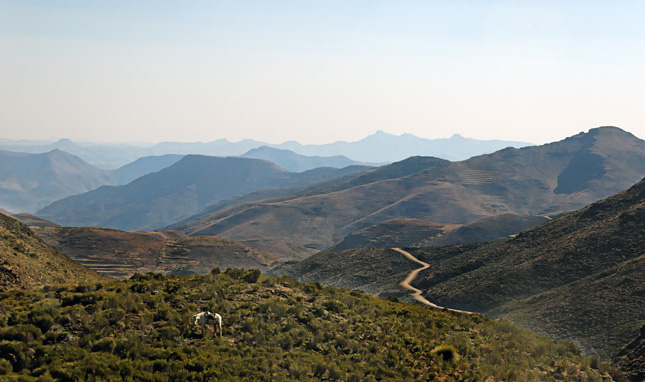-
In Lesotho, Population Pressures Have Created a Perfect Storm of Human Insecurity
July 17, 2017 By Anuj Krishnamurthy
Since declaring its independence in 1966, Lesotho has faced severe challenges to virtually every dimension of human security, writes Eugene Linden in a recent New York Times opinion article. In recent years, drought – coupled with widespread soil erosion and rapid population growth – has pushed a large portion of Lesotho’s two million people to the verge of starvation, which Linden calls “just one example of how fragile the future seems for Africa, large parts of which face the prospect of new famine and, in consequence, further catastrophic displacement within and among their growing populations.”
NYT: “Remember the Population Bomb? It’s Still Ticking”
Since declaring its independence in 1966, Lesotho has faced severe challenges to virtually every dimension of human security, writes Eugene Linden in a recent New York Times opinion article. In recent years, drought – coupled with widespread soil erosion and rapid population growth – has pushed a large portion of Lesotho’s two million people to the verge of starvation, which Linden calls “just one example of how fragile the future seems for Africa, large parts of which face the prospect of new famine and, in consequence, further catastrophic displacement within and among their growing populations.”
Today, Lesotho relies primarily on the export of diamonds and textiles to sustain its fledgling economy, and fares poorly in measures of human development. Linden does point to some progress: thanks to urbanization and intensified outreach on reproductive health, the use of modern contraception rose from 16 percent in 1998 to 60 percent in 2015. But a changing climate, ongoing food scarcity, and the demographic momentum in Lesotho – where more than one in five adults live with HIV – threaten to upend whatever gains have been achieved.
Look behind the headline with these resources from the New Security Beat:
- The demographic age structure of Lesotho’s youthful population could have serious consequences for the country’s political stability: Richard Cincotta, a Wilson Center global fellow, has found “a strong correlation in recent history between increasing median age and increasing liberal democracy, and vice versa.” With a median age of 21.2, Lesotho has a youthful age structure, and according to Cincotta’s research, this age structure suggests that Lesotho – which is classified as a “partly free” democracy by Freedom House – will not become “free” until after the year 2040.
- Lowering fertility rates and increasing access to reproductive health services can help facilitate a stronger, more equal democracy: Research conducted by Tim Dyson, professor of population studies at the London School of Economics, revealed that declines in fertility enable women to participate more assertively in politics and in the labor force. Further, in mature societies, adults outnumber children, allowing them to divert more of their time and energy to political affairs. Better family planning can also enhance food security and improve people’s ability to adapt to climate change.
- Lesotho’s relatively higher rate of contraceptive use is not uncommon in southern Africa. But in Central, West, and East Africa, development through the “demographic transition” has stalled because of high fertility rates. And due to its demographic momentum, Lesotho’s population – over half of which is under the age of 24 – will continue to grow as its younger members reach reproductive maturity.
- While the situation in Lesotho is inarguably dire, the “population bomb” headline is not helpful. By explicitly framing the problem in terms of Paul Ehrlich’s Malthusian arguments, the opportunities for positive incremental change are overlooked. For example, empowering, employing, and educating the country’s youth could help Lesotho achieve what is known as the “demographic dividend” – an economic boom led by the working-age population.
- As Lesotho’s farmland succumbs to overuse and erosion, feeding the country’s growing population will become an increasingly daunting task. Throughout Africa, soil erosion – coupled with climate change, which can affect the availability of water and the frequency of extreme weather events – has contributed to falling crop yields. In Lesotho, the problem is especially acute; since 1970 the country has lost one-third of its arable land, while its population has doubled. Finding ways to rehabilitate lost farmland and revamp food production in climate-stressed regions will prove to be a complex undertaking in years to come.
Sources: Central Intelligence Agency World Factbook, Freedom House, The New York Times, Political Demography, The World Bank
Photo Credit: Lesotho landscape, July 2008, courtesy of Flickr user Michael Williams
 A Publication of the Stimson Center.
A Publication of the Stimson Center.



